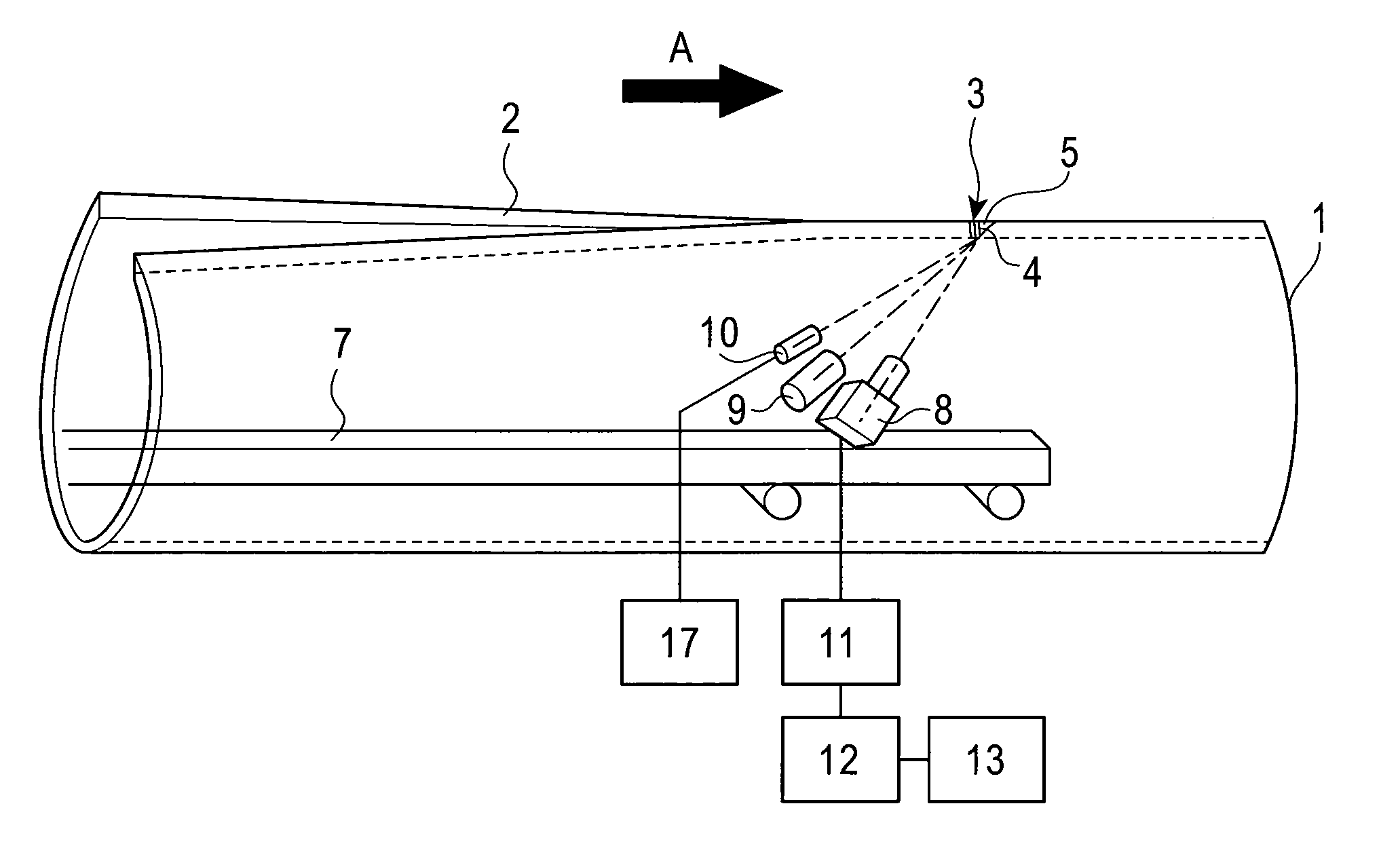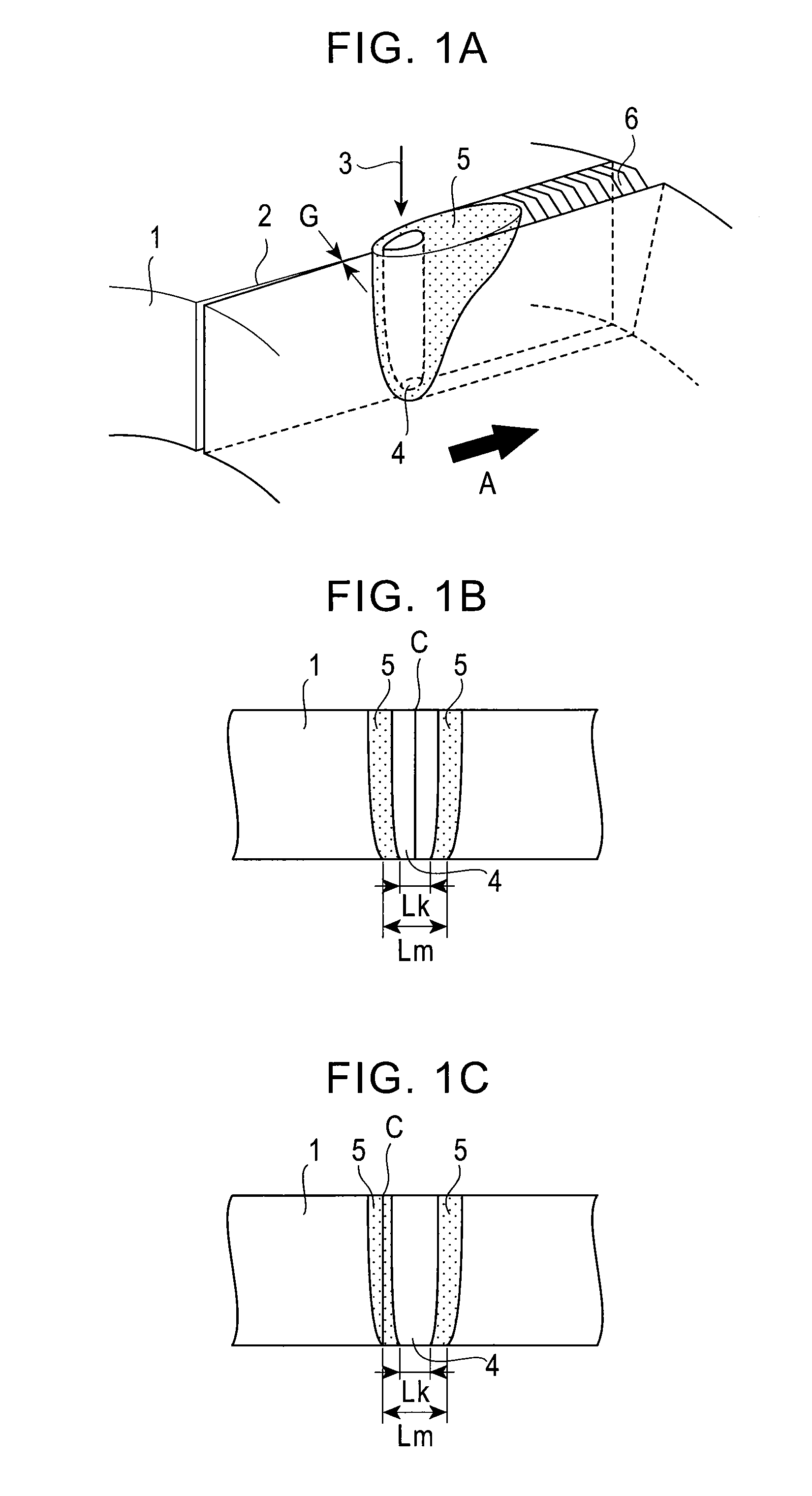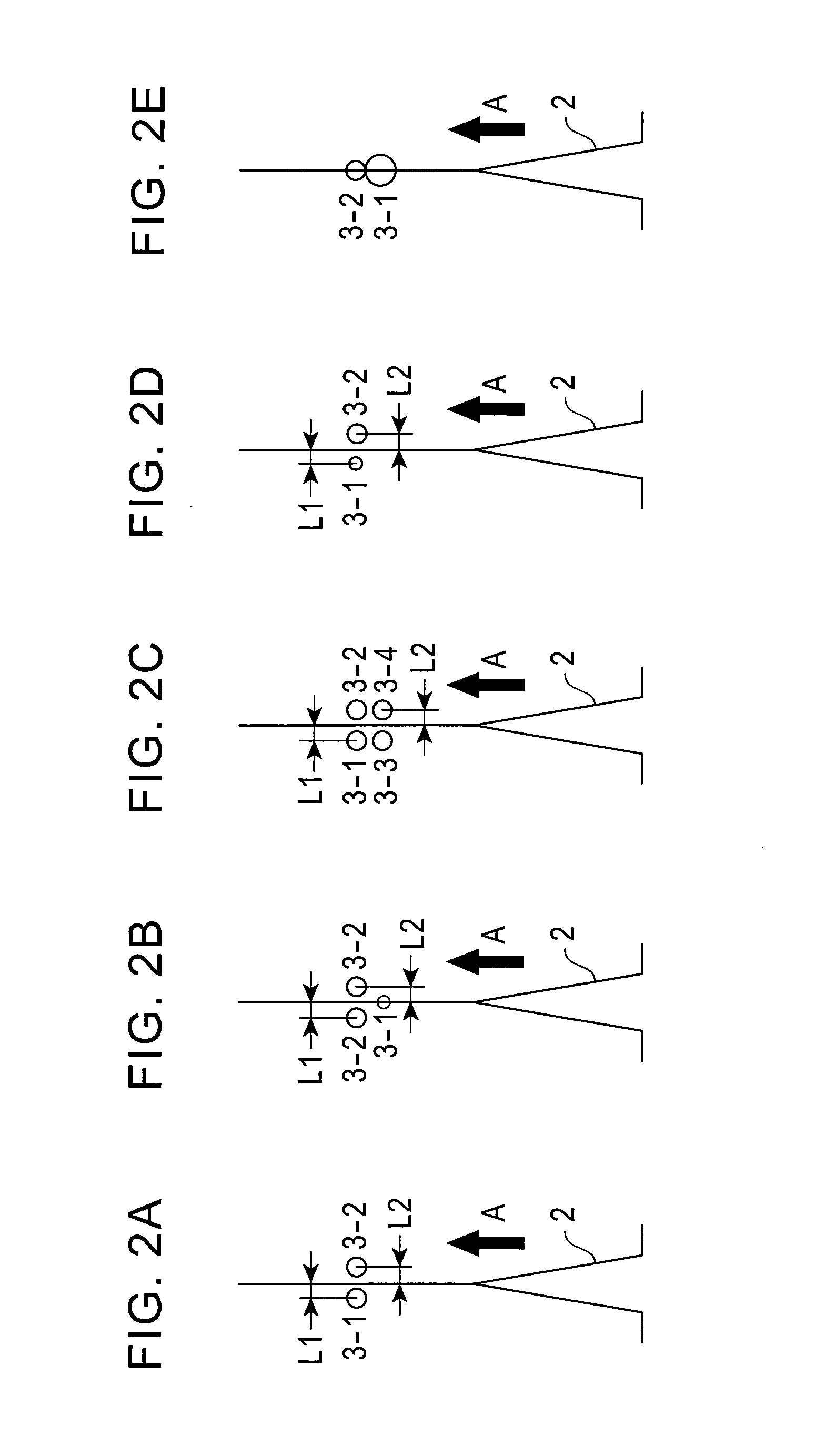Method for manufacturing a laser welded steel pipe
a technology of laser welding and steel pipes, which is applied in the field of methods for manufacturing steel pipes, can solve the problems of deterioration of the corrosion resistance of the seam, the problem of line and the inability to manufacture steel pipes based on electric resistance welded steel pipes. achieve the effect of stable and high yield ra
- Summary
- Abstract
- Description
- Claims
- Application Information
AI Technical Summary
Benefits of technology
Problems solved by technology
Method used
Image
Examples
example 1
[0078]Laser welded steel pipes were manufactured by forming steel strips into cylindrical open pipes with forming rolls and then irradiating each open pipe with a laser beam from the side of the outer surface while compressing the longitudinal edges of the open pipe using squeeze rolls. Components of the steel strips were as shown in Table 1.
[0079]In laser welding, a 25-kW CO2 laser oscillator was used, the power and welding speed of which were as shown in Table 2.
[0080]A monitoring device for the keyhole 4 was a monitoring camera 8 attached using the device shown in FIG. 3 to the mandrel bar 7 of a device for cutting inner beads, and was inserted into each open pipe 1. Note that the plasma illumination sensor 10 and the monitoring device 17 for it were not used, although shown in FIG. 3. The monitoring camera 8 was a camera that could visualize the predefined wavelength (i.e., 337 nm) only, in order to prevent disturbance due to light such as plasma illuminations generated by irrad...
example 2
[0088]Laser welded steel pipes were manufactured by forming steel strips into cylindrical open pipes with forming rolls and then irradiating each open pipe with a laser beam 3 from the side of the outer surface while compressing the longitudinal edges 2 of the open pipe 1 using squeeze rolls. Additionally, a plasma jet or a TIG arc was used as an auxiliary heat source, and the auxiliary heat was so placed that they could heat the longitudinal edges 2 before the laser beam 3 did. Components of the steel strips were as shown in Table 3.
[0089]In laser welding, a 20-kW fiber laser oscillator was used, the power and welding speed of which were as shown in Table 4.
[0090]A monitoring device for the keyhole 4 was a monitoring camera 8 attached using the device shown in FIG. 3 to the mandrel bar 7 of a device for cutting inner beads, and was inserted into each open pipe 1. Note that the plasma illumination sensor 10 and the monitoring device 17 for it were not used, although shown in FIG. 3....
example 3
[0096]Laser welded steel pipes were manufactured by forming steel strips into cylindrical open pipes with forming rolls and then irradiating each open pipe with a laser beam from the side of the outer surface while compressing the longitudinal edges of the open pipe using squeeze rolls. Additionally, a TIG arc was used as auxiliary heating means, and the arc was so placed that it could heat and melt the longitudinal edges before the laser beam did. Components of the steel strips were as shown in Table 5.
[0097]In laser welding, a 10-kW fiber laser oscillator was used, the power and welding speed of which were as shown in Table 6.
[0098]A monitoring device for the keyhole was a monitoring camera 8 attached using the device shown in FIG. 3 to the mandrel bar 7 of a device for cutting inner beads, and was inserted into each open pipe 1. Note that the plasma illumination sensor 10 and the monitoring device 17 for it were not used, although shown in FIG. 3. The monitoring camera 8 was a ca...
PUM
| Property | Measurement | Unit |
|---|---|---|
| diameter | aaaaa | aaaaa |
| length | aaaaa | aaaaa |
| distance | aaaaa | aaaaa |
Abstract
Description
Claims
Application Information
 Login to View More
Login to View More - R&D
- Intellectual Property
- Life Sciences
- Materials
- Tech Scout
- Unparalleled Data Quality
- Higher Quality Content
- 60% Fewer Hallucinations
Browse by: Latest US Patents, China's latest patents, Technical Efficacy Thesaurus, Application Domain, Technology Topic, Popular Technical Reports.
© 2025 PatSnap. All rights reserved.Legal|Privacy policy|Modern Slavery Act Transparency Statement|Sitemap|About US| Contact US: help@patsnap.com



